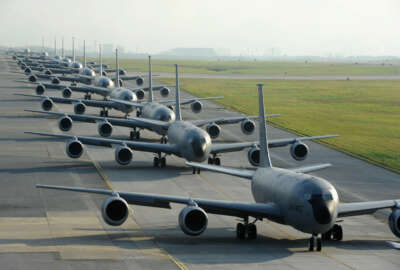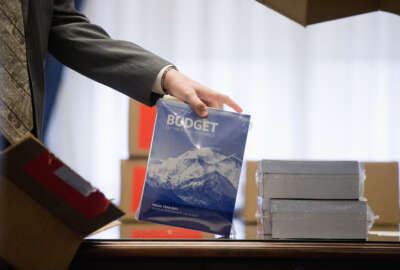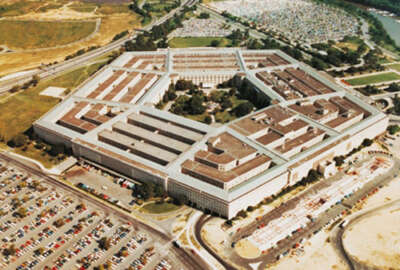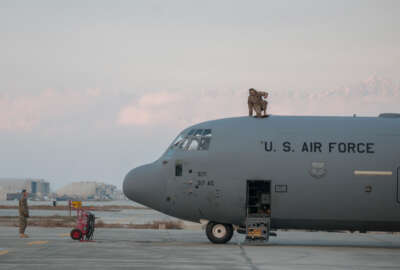
Air Force may ask Congress for permission to grow in 2017
In an era of military downsizing, the Air Force is one of the few parts of DoD that’s already received funding to grow over the next year. Yet officials say...
In an era of military downsizing, the Air Force is one of the few parts of DoD that’s already received funding to grow over the next year. Yet officials say they’re still struggling to achieve the end strength they need and may have to ask Congress for additional money to add more uniformed airmen.
Deborah Lee James, the Air Force secretary, told the Senate Appropriations Committee on Feb. 10 that her service might need a budget reprogramming to grow its active duty officer and enlisted force beyond the 317,000 airmen lawmakers approved for 2016.
Congress OK’d that growth from the previous year’s 311,000 after James successfully argued that the Air Force’s previous manpower cuts — 30 percent over the last 25 years — made it too small to keep up with its national security commitments.
“Given our current operations tempo we certainly can’t sink below that number, and I believe the demands will indicate we’ll need even more growth in FY17,” James said Wednesday. “In order to meet these demands, I plan to take a judicious approach to incrementally increasing our total force beyond the current level, provided of course that we can attract the right talent. So we would be grateful for this committee’s assistance should a reprogramming action be required.”
Aside from the Air Force’s heavy role in the military campaign against the Islamic State militants, the service has particular shortfalls in career fields involving cyber, remotely-piloted aircraft (RPA), nuclear weapons and aircraft maintenance.
Even so, the Air Force did not request a plus-up in its end strength in the 2017 budget DoD released Tuesday, saying the 492,000 active, reserve and National Guard airmen Congress approved for 2016 was the most it could afford to request in 2017 under the two-year budget deal, considering the need to provide enough funding for flight hours to restore readiness that’s been lost since the Budget Control Act took effect in 2013.
Meanwhile, the Air Force’s civilian ranks would decline by more than 100,000 to 172,300 under the budget it’s proposing for 2017. There would be some pockets of new hiring, including trainers to teach incoming drone pilots and to process the new uniformed accessions the Air Force is hoping for.
To deal with shortfalls within the strained RPA workforce, the service will begin allowing enlisted airmen to operate drones. That task was previously restricted to officers. Also, the budget asks for special incentive payments and bonuses to help retain airmen in that career field.
“RPA and manned pilot incentives are finally equalized by the way and that’s tremendous news,” James said. “But we can’t stop there. We’ll be submitting a legislative proposal this year that will go even farther so that we can retain all of our aviators against an improving economy and an increasing demand for commercial pilots.”
While acknowledging that its 2017 budget doesn’t do enough to fund its people needs, Air Force officials said it “fell short” in other areas, including delayed procurements of the F-35 and several other modernization programs.
“We’ll also continue to take risk in infrastructure, an action that we’ve repeated since sequestration in 2013,” said Maj. Gen. James Martin, the Air Force deputy assistant secretary for budget. “As a result, our infrastructure will continue to suffer, impacting both readiness and quality of life, as well as driving high-replacement costs in the future. Our IT infrastructure also needs additional funding to ensure we keep pace with the new, more complex programs that reside on its backbone.”
The budget plans for spending on facility sustainment, modernization and restoration at levels that officials warned were a “minimal” amount.
And that may be a significant understatement: the proposal would cut the account from $6.5 billion in 2016 to $6.2 billion in 2017. Air Force officials have previously testified that their general approach to facility upkeep during 2016 was “waiting for things to break” because the FSRM account only paid for about 80 percent of the Air Force’s maintenance needs.
Copyright © 2025 Federal News Network. All rights reserved. This website is not intended for users located within the European Economic Area.
Jared Serbu is deputy editor of Federal News Network and reports on the Defense Department’s contracting, legislative, workforce and IT issues.
Follow @jserbuWFED






